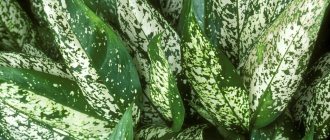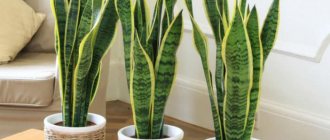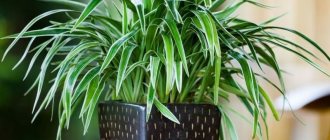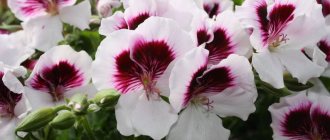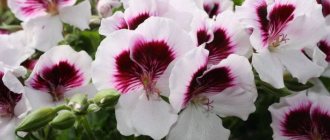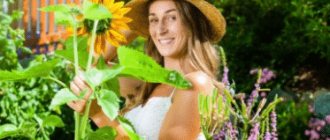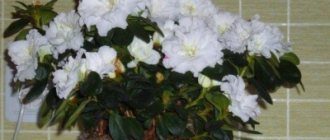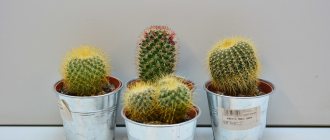Pelargonium, or Kalachik, is one of the most popular and widespread ornamental crops, which has been actively grown as an indoor flower for many years. It is a fairly ancient plant, gaining its worldwide popularity back in the 16th century thanks to wandering botanists who brought the culture to Europe.
South Africa is considered to be the birthplace of Kalachik; it was from there that the plant came into English gardens, and later spread throughout the world. Pelargonium is an unpretentious flower, due to which it is actively grown at home on all continents of the globe, because caring for it is quite simple and does not take much time and effort even for novice gardeners.
Types of pelargonium
The genus Pelargonium unites about 250 species of different plants of the geranium family. Among them there are herbaceous ones, as we are used to seeing them, and shrubs. The plant called geranium is classified as a separate genus. But often the indoor flower pelargonium is called geranium. The name of the flower comes from the Greek word “pelargos”, which means “stork”. After all, its flowers resemble the head of this bird. We usually call it a kalachik. This is probably due to the round shape of the leaves.
All numerous types of pelargonium, or kalachik, are conventionally divided into:
- ampelous;
- bush: flowering;
- fragrant.
The hanging ones grow downwards, the bush ones - upwards.
Zonal Kalachiki are plants with beautiful flowers that can have 5, up to 8 (semi-double) or more (double) petals.
Sometimes it's hard to believe that these are all balls. Flowers (photo) can be of a wide variety of shapes.
They are collected in a hemispherical umbrella. Various colors: from white, salmon, pink to burgundy, almost black. There are only pure yellow and blue balls. Flowers are often two colors. In this case, their location can be like this:
- inside – light, outside – darker;
- rim around the edge of the petal;
- different petals are painted in different colors.
The leaves can also be monochromatic or with multi-colored zones (that’s why the ball is called zonal). They can even be three colors. Varieties with very brightly colored leaves are classified as a separate subspecies. Their colors can be red, brown, yellow, white, purple.
Royal (English grandiflora) flowers are so large that they reach a diameter of six centimeters. They, like a princess, require special care. In winter, they need to be illuminated, and the temperature should not be higher than 10 degrees, otherwise flower buds will not form. And they bloom for only 3-4 months.
Rolls of this species are distinguished by dark burgundy spots or dark stripes near the veins on the lower petals.
Kalachiki "Angels" have flowers similar to violas. The 30 cm tall bush blooms all summer.
Many pelargoniums have a strong odor. This flower is called fragrant pelargonium. It blooms with small purple or pink flowers. All its charm lies in its dissected leaves, which smell like mint, lemon, lilac, pine needles, pineapple, roses and many other aromatic plants. Geranium oil is extracted from the leaves of this plant.
Ampelous rolls have stems up to a meter long with small ivy-like leaves and multi-colored buds.
There are also succulent balls, but they are not common here. They are used to create bonsai-style compositions.
The geranium bush grows in height from 10 cm (miniature) to 60 centimeters. But it can be higher, reaching 80 cm (airines). There are also microminiature rolls, the height of which is less than 10 cm.
The plant blooms in our latitudes from late March to November.
Short description
Everyone knows this plant and loves it. In total, more than 400 species of rolls are known in the world, which can be annual or perennial. Almost all varieties bloom for almost a whole year and are a decoration for any interior.
Advantages of rolls (geraniums)
- Some time ago, this plant lost popularity due to the appearance of other exotic flowers, but now it is again regaining its leading position in home flower collections of gardeners. Geranium has a number of undeniable advantages.
- Firstly, this is a brightly flowering beautiful plant that has a long flowering period and does not require special care.
- Secondly, the rolls have a specific aroma and healing properties. The smell drives away many pests, including indoor ones.
- Kalachiki can be grown both indoors and in the garden. There are a lot of varieties, and you can choose to suit every taste. The plant was brought from South Africa. From the 15th to 16th centuries it became a favorite, first in the homes of aristocrats, as a decorative and elegant plant, and then gained popularity among all segments of the population.
Features of cultivation - general recommendations
- In winter, this flower needs to be kept at a cooler air temperature than in other months of the year. However, it should not be less than +10 degrees.
- Unlike many indoor flowers, kalachiki (geranium) is not afraid of the sun and loves it very much. You can place this flower on the south side, and it will delight you with lush greenery and beautiful inflorescences.
- The plant is exotic and tropical, so it can delight its owners with flowering almost 365 days a year. To do this, you need to provide good care and the right amount of light.
- In order for the bush to grow in breadth and be fluffy, you need to periodically pinch the tops of the branches. Flowers that have bloomed should be removed immediately so that they do not take nutrients from the plant. Plants also need pruning.
- Kalachiki rarely get sick, and the cause is poor care and excessive watering. Gray rot and black leg are a consequence of waterlogging of the soil.
Reproduction
Kalachik is a flower that is easily propagated by cuttings. They are broken off or cut off from the side branches or tops. The length of the cutting should be from 5 to 7 centimeters and have at least two leaves. Plant immediately in a permanent place in light soil. The cut area is treated with ash.
You can take cuttings all year round. But it is better to do this in the spring - in March or April, and in the fall - in August and September.
Cuttings help improve the appearance of the plant. If it is very long and the flowers are placed only at the top, cutting off the top causes the growth of lateral shoots from dormant buds. Later they will be covered with flower stalks.
Withered flowers are removed so that new ones can form as quickly as possible.
Reproduction methods
There are several basic methods that gardeners use when breeding rolls. Let's see what is needed for these events.
Seed method
- Unlike many plants, this option for propagating geraniums does not present any difficulties at all. The seed material germinates very well and the germination rate is almost 100%.
- If you plant seeds from balls that you have at home, the grown plant will differ from the mother plant, as it will lose its varietal characteristics. This is especially true for hybrids.
- You can prepare a nutritious soil mixture yourself, mix the following components: 1 part - peat, 1 part - river sand, 1 part - turf soil. Before planting, you need to moisten the soil. After planting, sprinkle the seeds on top with the same soil. You can sprinkle a layer of moistened sand no more than 1.5 cm.
- Before planting, the soil is disinfected with a solution of potassium permanganate so that the rolls do not get sick with such a dangerous disease as “blackleg”.
- Next, the planted seeds are covered with film or glass and the temperature is maintained at +18 - 20 degrees. When the seeds germinate, the shelter must be removed and the temperature reduced slightly to +16 - 20 degrees. Place the container in a sunny place.
- After 2 months, several independent adult leaves will grow. Then you need to carry out the picking procedure, that is, plant the sprouts in separate small pots.
- If there are 5 - 6 leaves, it is advisable to pinch the upper parts of the shoots so that the crown becomes lush and grows.
Cuttings
- Sprouts can be harvested after pruning and throughout the year. But the strongest cuttings will be those cut in the spring.
- Their length should be 7 - 8 cm, leave a few leaves on each. Next, dry the sprout for 24 hours, and treat the cut area with finely crushed activated carbon.
- Then plant the sprout in a nutrient substrate. It should be very loose; you can even use moistened sand.
- When moistening the substrate, avoid getting moisture on the leaves and stems of the plant. The room temperature should be about 22 degrees Celsius.
- There is no need to cover the cuttings. When the cuttings take root, they are then transplanted into permanent pots.
Care
Water the plants as the soil dries out. Kalachik is a flower that loves moisture, but it should not be flooded. In summer, the ball is watered more often, and much less frequently during the dormant period. But still, the soil must be constantly moist.
Excess moisture comes out through the pan. But the drainage in the pot must be of high quality.
The roll does not need to be sprayed. He loves dry air.
Kalachiki are indoor flowers. But in summer they feel better in the fresh air.
And feeding them won't hurt. It is carried out once every two weeks with liquid complex mineral fertilizer. You can use the “Bud” product.
Caring for pelargonium at home for beginners
Caring for a plant at home is not a complicated or time-consuming process, even for novice gardeners. However, despite the unpretentiousness of the flower, it is still necessary to adhere to some recommendations for its care.
Lighting
It will not be possible to grow beautifully flowering pelargonium in partial shade or shade, since in insufficient light the shrub simply stops producing inflorescences. In addition, in a dark room, the growth of the plant stops, and its leaves lose their decorative appearance.
During periods when daylight hours are shortening, it is recommended to provide Kalachik with additional lighting.
When choosing a place to place a container with Kalachik, it is worth considering that it needs bright, diffused lighting. However, prolonged exposure to direct sunlight on the ground part of the bush should be avoided, as this can cause burns.
Temperature and humidity
Pelargonium is a fairly heat-loving flower, which is recommended to be grown at temperatures from 18 to 25 °C. During the plant's dormant period, it is advisable to reduce the air temperature in the room to 15-12 °C. But if it is impossible to maintain the shrub at this temperature, it should be provided with additional lighting. Because the warmer the room in which Kalachik grows, the longer the daylight hours should be.
Lighting for geraniums
The shrub loves moderate humidity and does not respond well to foliar spraying and other contact methods of air humidification. To ensure the optimal level of humidity, it is enough to prevent the soil from drying out deeply.
Watering and fertilizing
Pelargonium is a guest from Africa, for this reason the plant does not tolerate excessive watering and responds to excess moisture with drooping foliage. The kalachik is capable of storing water, so it should be watered only after the top layer of soil has dried.
On a note!
The regularity of watering directly depends on the air temperature in the room: in summer the plant can be watered every other day, and in winter it is better to reduce the number of waterings to 2-3 times every 30 days.
During the period of active growth, which lasts from spring to autumn, the flower needs additional feeding. It is recommended to feed the plant with liquid fertilizers once every 2 weeks. When feeding a flower, the main thing is to apply fertilizers exclusively to slightly moistened soil. As a top dressing, you can use any fertilizer for ornamental crops with a high content of phosphorus and potassium.
You may be interested in:
Phalaenopsis Liodoro Orchid: description and characteristics, care The Phalaenopsis Liodoro Orchid will be a wonderful addition to the home collection of gardeners who love...Read more...
Care during the flowering period
During the flowering period, Kalachik requires more careful care, since providing flowers with the necessary nutrition depletes it. The plant, as a rule, blooms from spring to autumn, since in the winter season it does not have enough natural light. Periodic ventilation promotes brighter and longer flowering.
Advice!
To achieve more voluminous flowers, experts advise watering the bush with iodine water. To prepare an iodine solution, just add 1 drop of iodine to 1 liter of water for irrigation.
During the opening of the buds, the plant should not be sprayed, as this has a bad effect on the condition of the flowers. The flowering of pelargonium is a reason to apply complex mineral fertilizers for flowering ornamental crops at least once a month.
Trimming and pinching
Flower pruning should be done exclusively in early spring, when the plant has just come out of hibernation. Annual pruning of the shrub restores its decorative appearance and stimulates flowering. Shoots that grow from leaf axils must be removed, as they significantly spoil the appearance. Dead leaves, old and large stems of the bush are also removed, so that no more than 5 growing points remain. After the procedure, it is recommended to feed the indoor flower with vitamin supplements.
It is advisable to pinch when the flower emerges from dormancy, which occurs in the last month of winter or early spring. Pinching is a process during which points of further growth are removed in order to increase the bushiness of the shoots.
Pinching the plant depends on the method of growing the shrub. A roll grown from seeds is pinched on the 6th leaf, and from a cutting – on the 8th. During the pinching process, you should also remove small shoots growing inside the bush, since they interfere with the free passage of air and contribute to stagnation of moisture.
Diseases and pests
Most of the diseases that can affect Kalachik are caused by improper flower care:
- Thus, excessive watering can cause pelargonium to become infected with gray rot, black leg, and the appearance of swelling on the leaf blades. Excessive watering and stagnation of moisture also leads to rotting of the root system.
Gray rot - The plant is quite often affected by rust, which appears in the form of clearly defined red spots on the leaf blades. The cause of this disease is poor-quality water for irrigation or contaminated air. To cure indoor crops from rust, it is necessary to remove the leaves, stop watering and treat the flower with fungicides.
- The flower can also be affected by parasites, namely aphids, whiteflies and mites. You can get rid of insects by treating the bush with a weak solution of potassium permanganate or insecticides.
Application
The fragrant roll has bactericidal substances. While in the air, they kill many pathogenic microbes and even staphylococcus.
Fragrant pelargonium helps treat sore throat. For this, an infusion of leaves is used.
For otitis media, geranium leaves are kneaded and a compress is applied to the ear, which relieves pain and reduces inflammation.
The same compress, but with more leaves, is applied for radiculitis or osteochondrosis.
The smell of the fragrant roll has a beneficial effect on patients with neurasthenia, hypertension, heart and stomach diseases, and suffering from insomnia.
But its main purpose is to decorate our lives. As soon as the threat of frost has passed, a huge number of rolls of all kinds and colors appear on city streets.
They are used to decorate balconies, flower beds, and ridges.
Why doesn't the little ball bloom?
- This may be because the room is too warm in winter and the flower cannot enter a dormant state. Therefore, it continues to produce leaves rather than flower stalks.
- Due to damage by mites, weevils and other pests or gray rot.
- Due to improper watering. From excess moisture, the plant rots and withers. With its deficiency, the leaves dry out.
- Root damage by fungal and bacterial diseases.
- A very large pot.
Among these causes, diseases and pests are of particular concern. Without eliminating them, the ball will disappear.
Characteristics of pelargonium
Pelargonium is a genus of perennial plants belonging to the Geraniaceae family. There are about 300 different types of pelargonium, which differ from each other in external characteristics. In addition, each type of geranium has a unique smell: depending on the type, the flower can exude a citrus, nutmeg and even chocolate aroma.
The stems of the bush can be straight or branched, but the leaves come in a wide variety of shapes, from simple to palmately dissected. Pelargonium flowers are collected in umbrella-shaped inflorescences; depending on the species, the inflorescences can be either few or many flowers. The texture and color of the petals also depends on the type of plant. For this reason, you can find both single-color and two-color pelargoniums with smooth or terry petals. Kalachiki flowers can be painted in a wide variety of colors and shades.
The result of flowering is the appearance of fruit-pods on which sepals are present. The fruits of the flower open like a bird's beak, which is why the plant was classified as a member of the Geraniaceae family.
However, despite popular belief, pelargonium (Pelargonium) and geranium (Geranium) are not the same type of plant, they are completely different crops belonging to the same family. Geranium is a fairly frost-resistant plant that grows well in the wild, but pelargonium likes to grow in warm climates, so it is actively grown indoors.
You may be interested in:
Crossandra - care and cultivation at home Crossandra is an “Indian” beauty, which is loved by many gardeners due to its bright and long-lasting...Read more...
